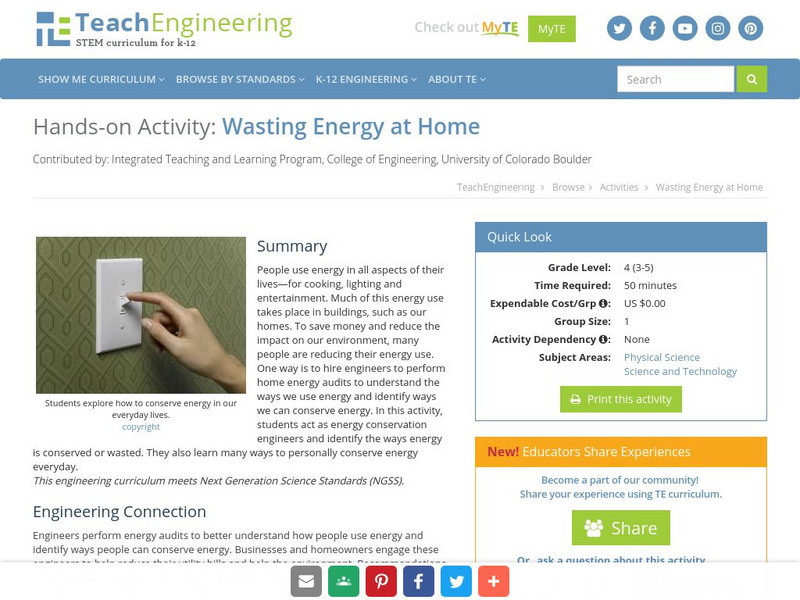Curated OER
Problem Solving Lesson Plan 2
Students study a number of work and family management roles and techniques.
US Department of Energy
U.s. Department of Energy: Energy Efficiency: Kids Saving Energy: Roofus's Home
Take a tour of Roofus's home to see why it is so energy efficient. With numerous bits of advice about improvements that you can make to make better use of energy at home.
E-learning for Kids
E Learning for Kids: Science: Cayman Islands: What Is Energy Conservation?
Renewable and nonrenewable energy sources are described, different types of energy, and how energy can be conserved.
Science Buddies
Science Buddies: Spare a Watt, Save a Lot
In this science fair project, you will investigate the different uses of electricity in your home. By identifying appliances, and determining how much energy they use, as well as which are phantom loaders, you can determine if there are...
Council for Economic Education
Econ Ed Link: Be an Energy Saver
This activity focuses on the scarce and non-renewable nature of fossil fuels in order to stimulate student thinking about energy conservation. It emphasizes the fact that saving energy can be good for the wallet as well as the earth's...
Science Education Resource Center at Carleton College
Serc: Choosing Between Home Appliances: Benefits to the Planet and Your Wallet
Students compare various options for purchasing new home appliances by comparing the energy usage of more efficient models to less energy efficient models. They calculate the payback period in cases for which the purchase price for the...
TeachEngineering
Teach Engineering: Wasting Energy at Home
People use energy in all aspects of their lives - for cooking, lighting and entertainment. Much of this energy use takes place in buildings, such as our homes. To save money and reduce the impact on our environment, many people are...
TeachEngineering
Teach Engineering: Energy Conservation
Learners are introduced to the idea that energy use impacts the environment and our wallets. They discuss different types of renewable and nonrenewable energy sources, as well as the impacts of energy consumption. Through a series of...
Alabama Learning Exchange
Alex: Save a Buck Challenge
Our pipes leak, air drafts push through our windows and walls, light bulbs create more heat than light, and every appliance we have stays plugged in all day long. Of course its our parents who pay the bills, so it doesn't matter. This is...
Other
Abc Da Energia
ABC Da Energia describes the many ways that energy can be obtained and conserved. It explains different sources of energy, how each works, and how energy can be saved in our daily lives. Interactive energy-saving activities and games...
Other
Warmair.com: Insulation
The role of insulation in preventing heat loss is discussed. The concept of thermal resistance is introduced and explained. Understandable language but no graphics.









